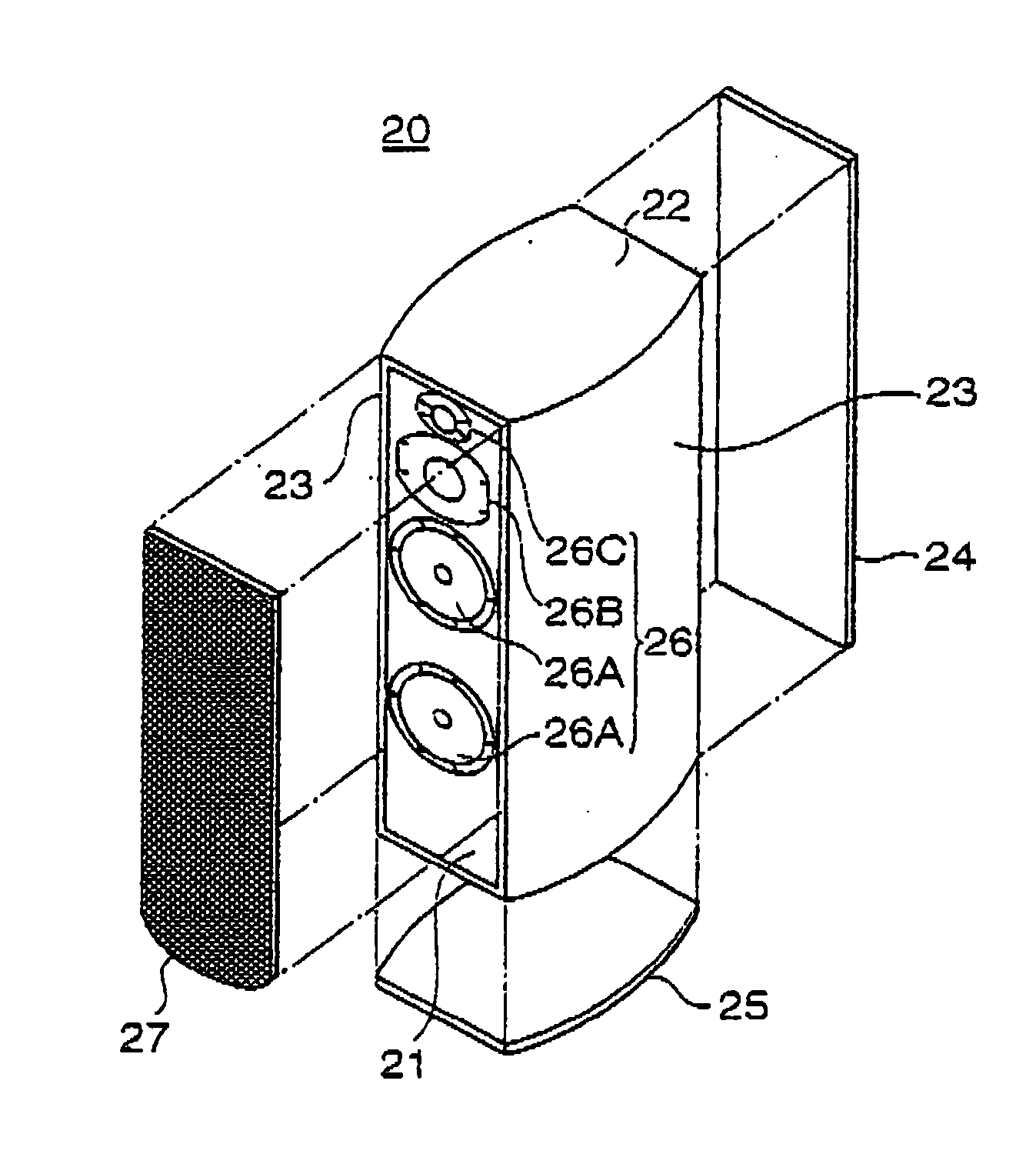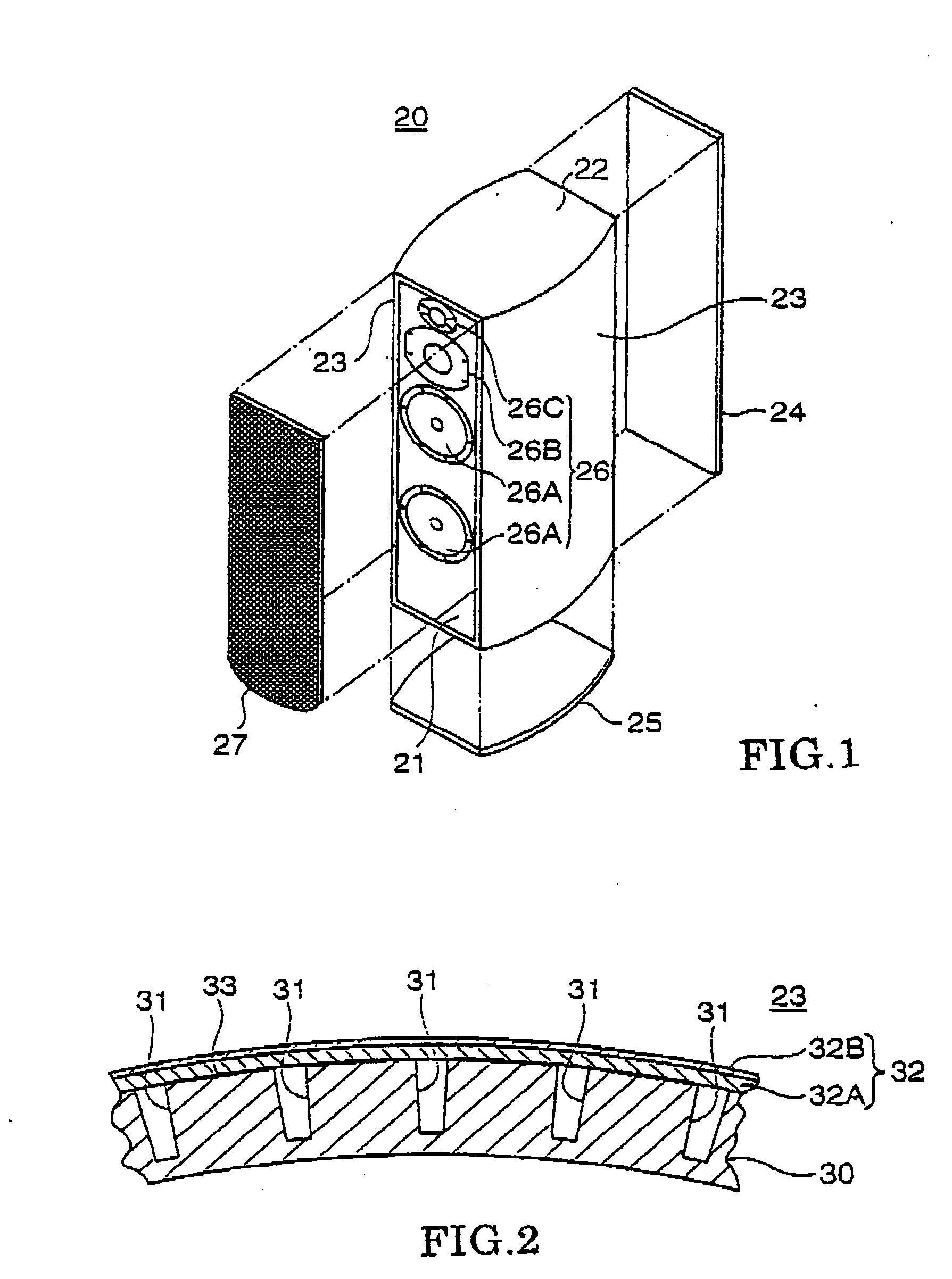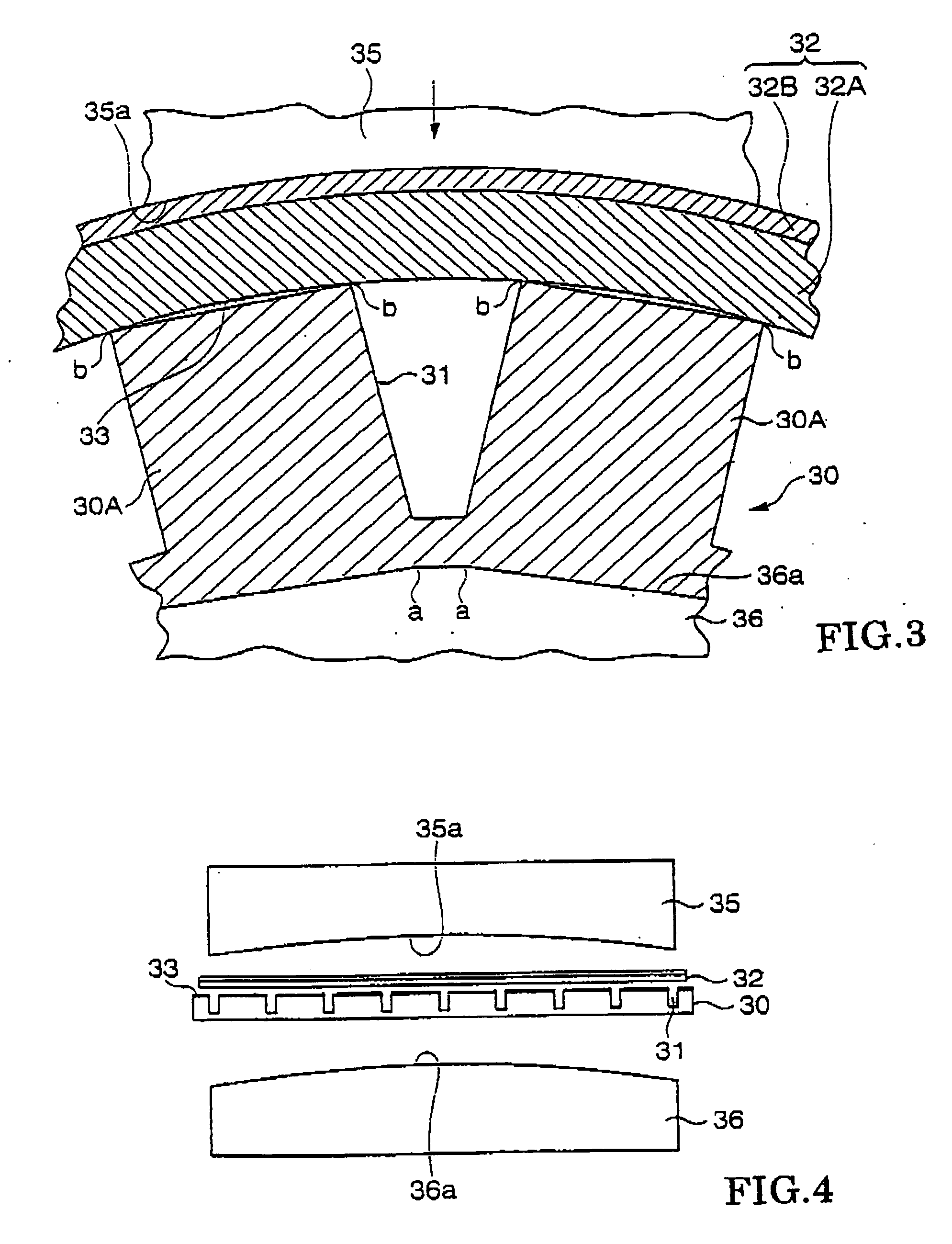Speaker cabinet
a technology for cabinets and speakers, applied in the field of speakers, can solve the problems of low productivity, large-size forming machines, low-quality outer appearance of cabinets, etc., and achieve the effect of improving acoustic characteristics, high rigidity and shape stability
- Summary
- Abstract
- Description
- Claims
- Application Information
AI Technical Summary
Benefits of technology
Problems solved by technology
Method used
Image
Examples
Embodiment Construction
[0024]FIG. 1 is an exploded perspective view of a speaker cabinet in accordance with an embodiment of the present invention. FIG. 2 is a sectional view showing a principal section of a side plate employed in the speaker cabinet of FIG. 1, and FIG. 3 is an enlarged sectional view of the side plate.
[0025] In these figures, the speaker cabinet, generally represented by reference numeral 20, is in the shape of a vertically-elongated rectangular parallelepiped or box having six cabinet wall plates, i.e. a front plate 21. top plate 22, a pair of side plates 23, back plate 24 and bottom plate 25. To the front plate 21 are secured four speakers 26 of three different types and a grill net 27 covering the speakers 26. The four speakers 26 are two bass speakers 26A, one squawker speaker 26B and one tweeter speaker 26C.
[0026] Each of the front plate 21, top plate 22, side plates 23, back plate 24 and bottom plate 25 is formed by adhesively bonding a decorative sheet or plate to the outer surf...
PUM
 Login to View More
Login to View More Abstract
Description
Claims
Application Information
 Login to View More
Login to View More - R&D
- Intellectual Property
- Life Sciences
- Materials
- Tech Scout
- Unparalleled Data Quality
- Higher Quality Content
- 60% Fewer Hallucinations
Browse by: Latest US Patents, China's latest patents, Technical Efficacy Thesaurus, Application Domain, Technology Topic, Popular Technical Reports.
© 2025 PatSnap. All rights reserved.Legal|Privacy policy|Modern Slavery Act Transparency Statement|Sitemap|About US| Contact US: help@patsnap.com



